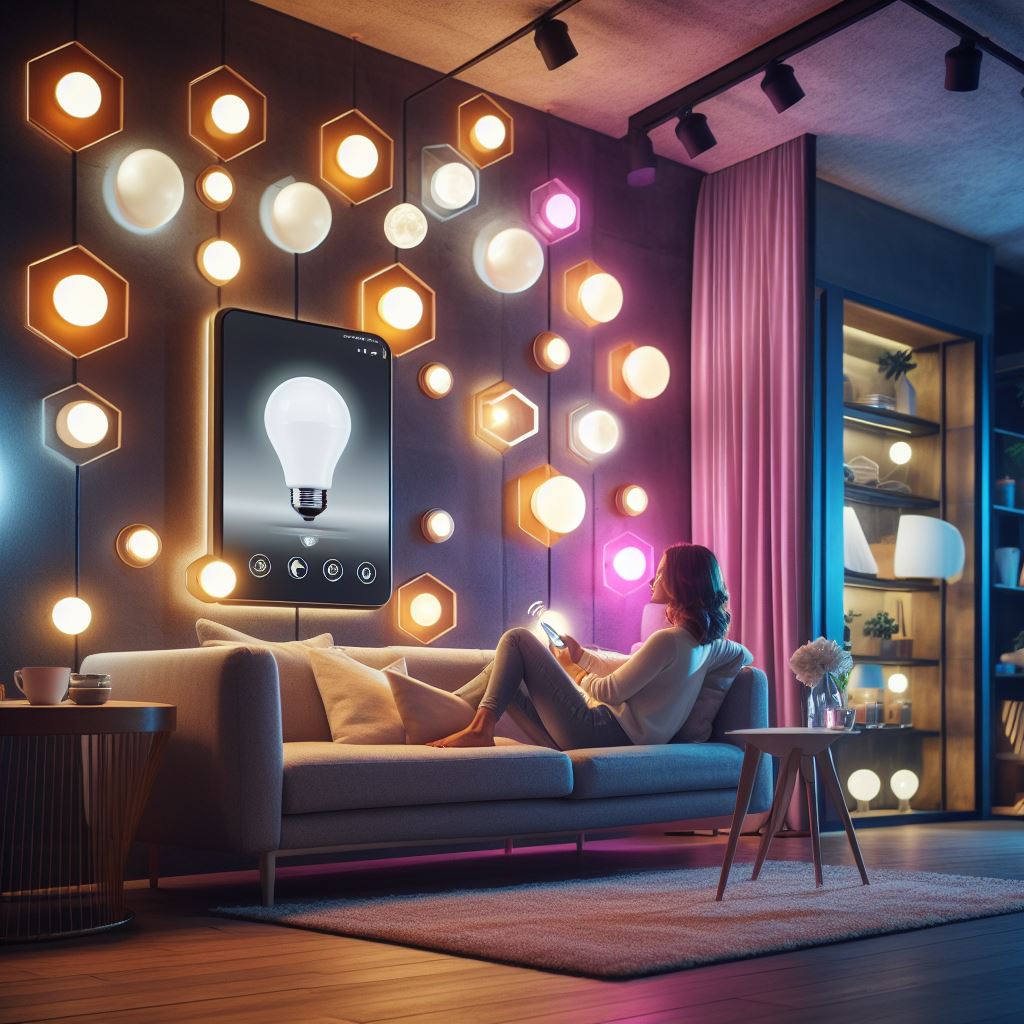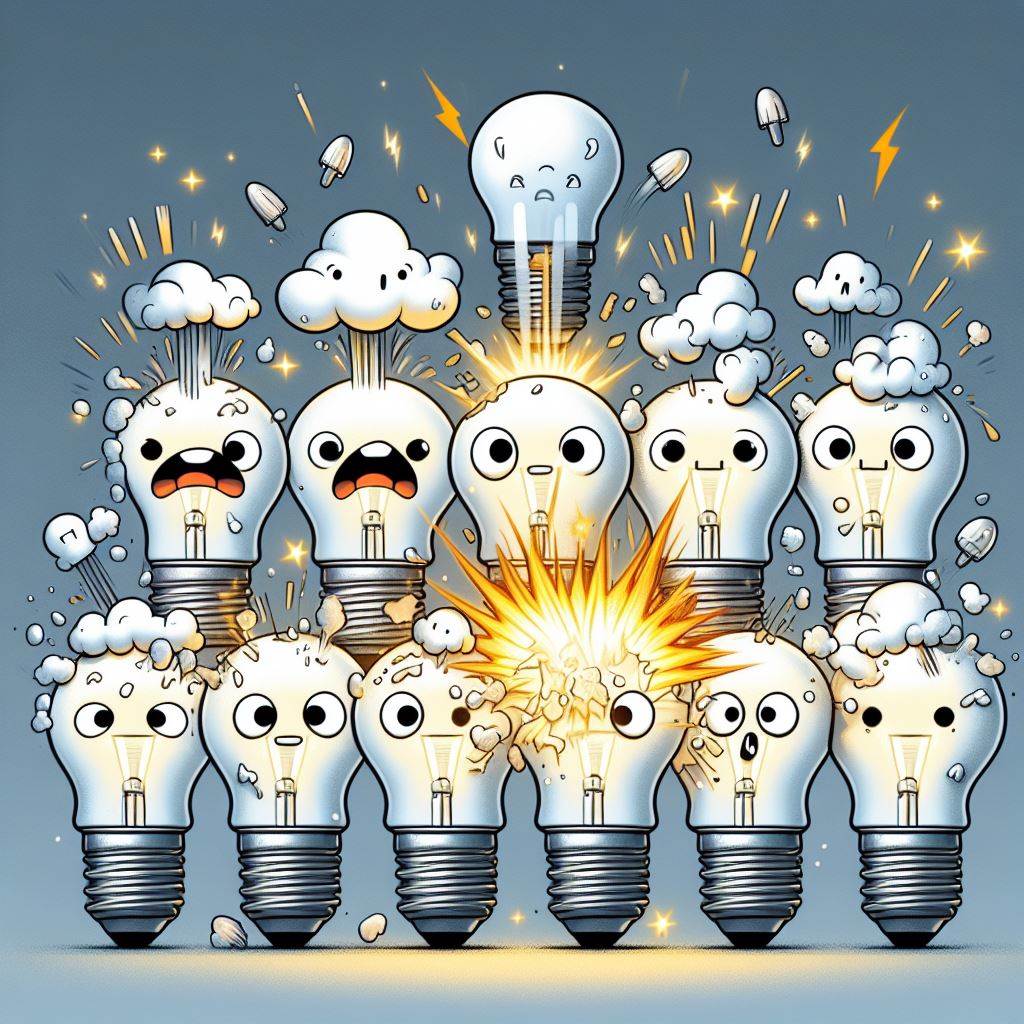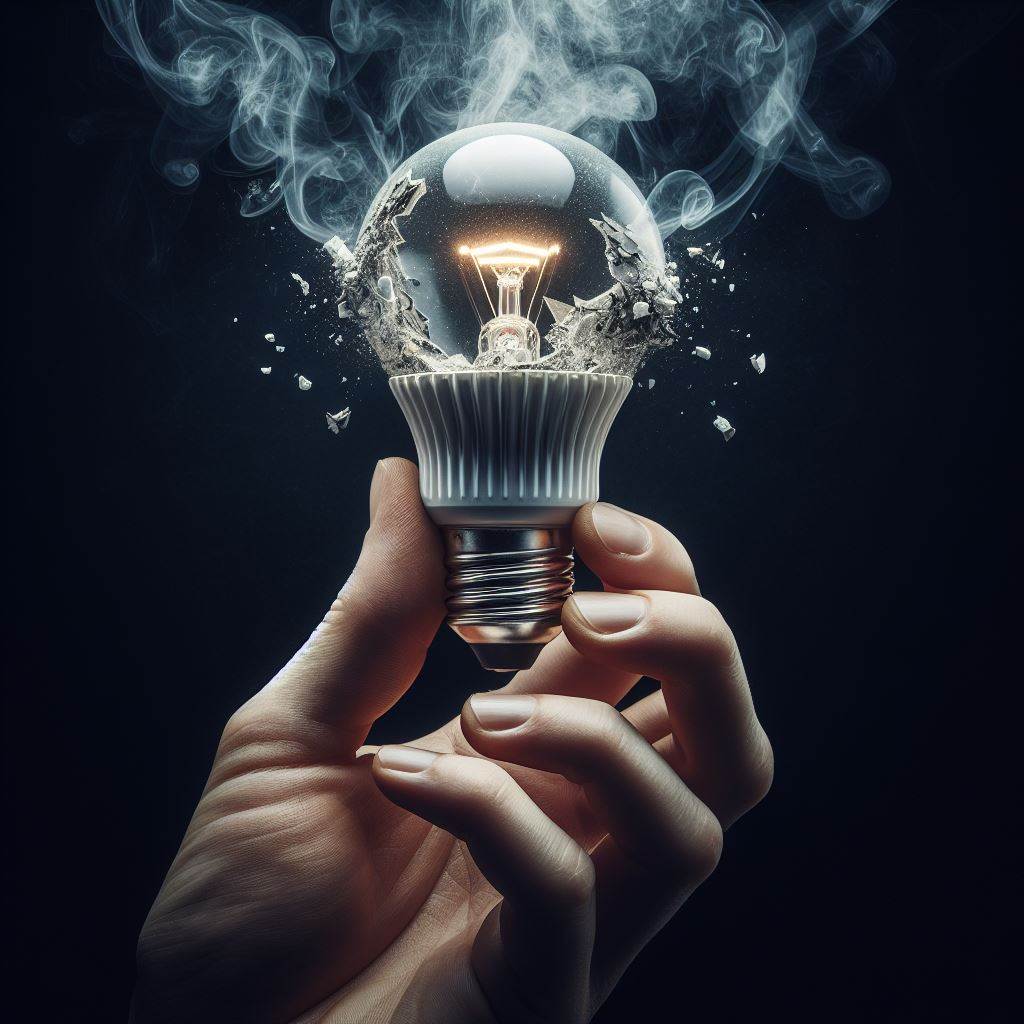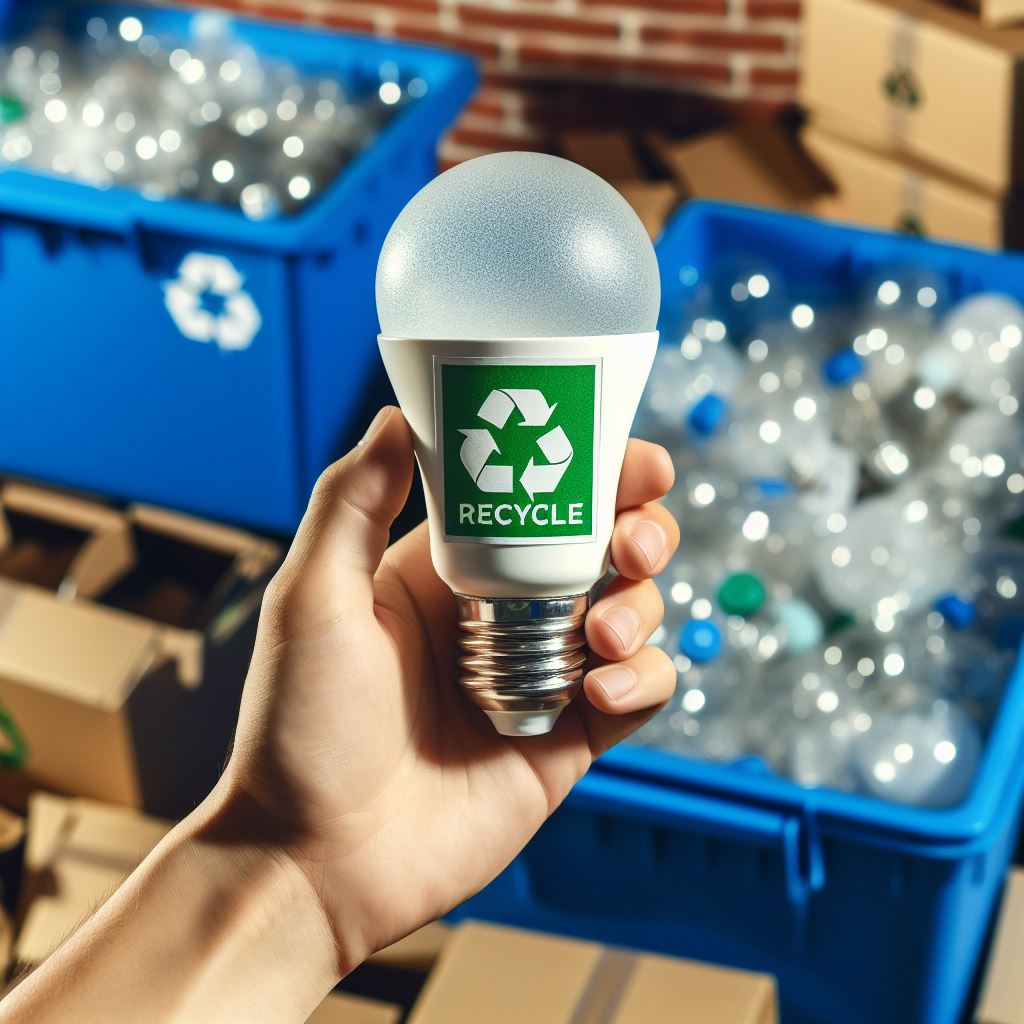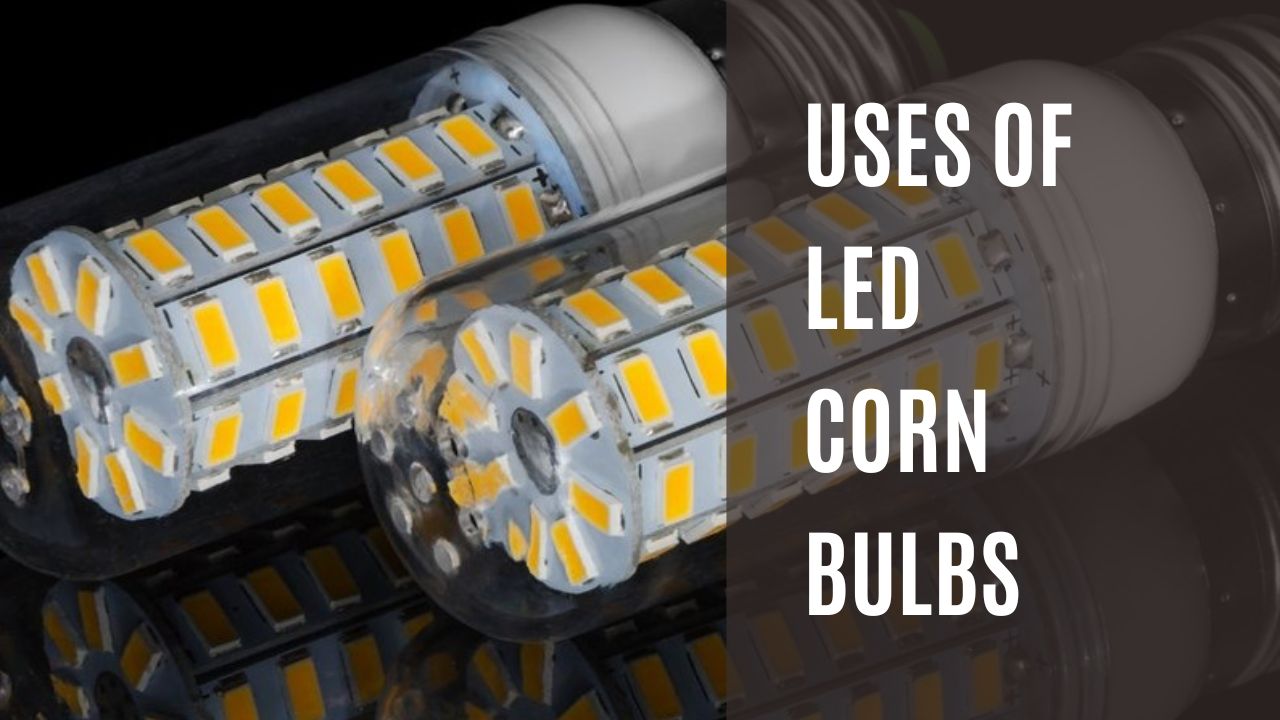Smart light bulbs have revolutionized the way we illuminate our homes and spaces. Unlike traditional incandescent and fluorescent bulbs, smart light bulbs are equipped with advanced technology that allows them to connect to a network, be controlled remotely, and even change colors.
These innovative lighting solutions offer convenience, energy efficiency, and a range of customizable features, making them increasingly popular among homeowners. When investing in smart light bulbs, it is essential to understand their lifespan – how long they are expected to last before needing replacement.
The lifespan of a smart light bulb refers to the number of hours it can function before its performance begins to deteriorate significantly. By understanding the lifespan of these bulbs, users can make informed decisions about their purchase and usage patterns while ensuring optimal functionality throughout their lifetime.
Definition of Smart Light Bulbs
Smart light bulbs differ from traditional lighting sources as they incorporate built-in wireless technology such as Wi-Fi or Bluetooth. This connectivity enables users to control the lights remotely using smartphone apps or voice commands via virtual assistants like Amazon Alexa or Google Assistant.
Additional features include dimming capabilities, color-changing options, scheduling functions, and integration with other smart home devices. The core component of a smart bulb is Light Emitting Diode (LED) technology.
LEDs are small semiconductor devices that produce light when an electric current passes through them. They are highly efficient compared to traditional incandescent or fluorescent bulbs since they convert most of the electrical energy into visible light rather than heat.
Smart Light Bulb Lifespan Comparison
| Aspect | Traditional LED Bulbs | Smart LED Bulbs |
|---|---|---|
| Lifespan | Approximately 25,000 hours | Varies, typically 15,000 to 25,000 hours |
| Control Options | Standard on/off, dimming | Remote control, smartphone app, voice control |
| Connectivity | Not applicable | Wi-Fi, Bluetooth, Zigbee, or other protocols |
| Compatibility | Standard fixtures | Smart home ecosystems (e.g., Alexa, Google Home) |
| Additional Features | No smart features | Color-changing options, scheduling, automation |
| Cost | Lower upfront cost | Higher upfront cost due to smart technology |
| Integration | Standalone | Integrated with smart home systems |
Importance of Understanding Their Lifespan
The lifespan of a smart light bulb plays a crucial role in determining its overall value for consumers. Unlike conventional light bulbs that burn out suddenly after reaching their maximum lifetimes, LED-based smart bulbs gradually lose their brightness over time.
By understanding the estimated lifespan of smart light bulbs, users can plan their investments and make choices based on their specific needs. Additionally, knowing the expected lifespan helps consumers understand the maintenance required and budget for future replacements.
This knowledge is particularly important for smart lighting systems installed in larger spaces or commercial settings where frequent bulb replacements can be time-consuming and expensive. Furthermore, understanding the lifespan of smart light bulbs allows users to optimize their usage patterns.
By knowing how long a bulb is expected to last, users can estimate average daily usage hours and adjust accordingly to ensure longevity. This knowledge empowers individuals to make informed decisions that maximize efficiency, reduce energy consumption, and minimize waste.
Overview of Smart Light Bulbs
Smart light bulbs are a revolutionary advancement in lighting technology that has transformed the way we illuminate our homes and workplaces. Unlike traditional incandescent or fluorescent bulbs, smart light bulbs are embedded with wireless communication capabilities, allowing them to connect to a network and be controlled remotely through smartphones, tablets, or voice assistants such as Amazon Alexa or Google Assistant. This innovative feature offers users unprecedented convenience and control over their lighting environment.

Explanation of Smart Light Bulb Technology
At the core of smart light bulb technology lies the integration of LED (Light Emitting Diode) technology. LEDs are semiconductors that emit light when an electrical current passes through them. Unlike incandescent bulbs that rely on heating a filament to produce light, LEDs produce light directly through electroluminescence.
This fundamental difference makes LEDs significantly more energy-efficient and durable compared to traditional bulbs. Furthermore, smart light bulbs have built-in Wi-Fi or Bluetooth connectivity options that enable them to communicate with other devices within a home automation system.
These bulbs can connect to a central hub or directly to your smartphone via dedicated apps. This connection allows users to control various aspects of their lighting settings, such as brightness level, color temperature adjustment (in some models), scheduling on/off times, and even creating different scenes for different moods.
Types of Smart Light Bulbs Available in the Market
The market offers several types of smart light bulbs designed for diverse needs and preferences. The most common types include:
1. Dimmable Smart LED Bulbs: These bulbs offer adjustable brightness levels using either an app or voice commands. They can create ambiance for different activities like relaxing evenings or vibrant parties.
2. Color-Changing Smart LED Bulbs: These versatile bulbs allow users to select from millions of colors using an app or voice commands. They offer endless possibilities for transforming the lighting atmosphere to match various moods or occasions.
3. Tunable White Smart LED Bulbs: These bulbs provide the ability to adjust color temperature, ranging from warm white to cool white. This feature is particularly useful for creating a comfortable environment or assisting with concentration and relaxation.
4. Smart LED Filament Bulbs: Combining the vintage charm of traditional filament bulbs with smart technology, these bulbs offer a warm, nostalgic glow while maintaining all the advantages of smart lighting capabilities. 5. Outdoor Smart LED Bulbs: Designed specifically for outdoor use, these weather-resistant bulbs can withstand various elements and are often used for enhancing security or creating ambiance in outdoor spaces such as patios and gardens.
It’s worth noting that each type of smart light bulb comes in different shapes and socket sizes to cater to a range of fixtures commonly found in homes and commercial buildings. Additionally, manufacturers continue to introduce new features and advancements in smart light bulb technology regularly, expanding the options available to consumers.
Factors Affecting Lifespan
Quality and Brand of the Smart Light Bulb
The quality and brand of a smart light bulb are key factors that significantly impact its lifespan. Reputable brands invest heavily in research, development, and quality control to ensure their products meet rigorous standards.
These brands often use premium components, advanced manufacturing techniques, and conduct thorough testing to ensure the longevity of their bulbs. On the other hand, generic or lesser-known brands may compromise on quality to offer lower-priced alternatives.
When comparing reputable brands with generic options, there are several distinctions to consider. Reputable brands have established a reputation for producing reliable products that last longer.
They prioritize customer satisfaction by using high-quality materials that endure regular wear and tear effectively. In contrast, generic options might prioritize affordability over longevity, resulting in reduced durability and shorter lifespans.
The impact of choosing a reputable brand versus a generic option goes beyond just extended lifespan. Opting for a trusted brand ensures overall reliability, improved performance, better energy efficiency, and enhanced user experience with features like seamless connectivity or advanced controls through smartphone apps or voice assistants such as Amazon Alexa or Google Assistant.
Usage Patterns and Operating Conditions
Apart from the quality aspect related to the brand choice, how you use your smart light bulbs can also have a significant impact on their lifespan. One crucial aspect is the average daily usage hours.
The more frequently you use your smart bulbs throughout the day or night, the shorter their lifespan will tend to be. For instance, if you have an LED-based smart light bulb rated for 25,000 hours but keep it turned on for 24 hours continuously every day (which is highly unlikely), it would last just over 2 years before needing replacement.
However, if you use it more sparingly with an average daily usage of around 4-6 hours, it could last you more than 11 years. Furthermore, environmental factors such as temperature and humidity can also impact the lifespan of smart light bulbs.
Extreme temperatures, whether too hot or too cold, can accelerate the degradation of components and reduce the overall lifespan of the bulb. Similarly, excessive humidity or exposure to moisture can lead to early failure due to corrosion or damage to internal electronics.
To ensure optimal longevity, it is recommended to follow manufacturer guidelines regarding usage patterns, operating conditions, and environmental requirements. This will help maximize the lifespan of your smart light bulbs and ensure they provide reliable service for an extended period.
When considering factors affecting the lifespan of smart light bulbs, both quality/brand choice and usage patterns/operating conditions play crucial roles. Choosing a reputable brand ensures superior durability and longevity due to their commitment to quality control and advanced manufacturing techniques.
Additionally, monitoring daily usage hours and creating a suitable environment by avoiding extreme temperatures or excessive humidity will help prolong the lifespan of your smart light bulbs. By paying attention to these factors, you can make informed decisions about purchasing smart light bulbs that align with your expectations in terms of both performance and longevity.
Lifespan Estimates for Different Smart Light Bulb Technologies
LED-based smart light bulbs
A Bright Revolution: Introduction to LED Technology
LED, or Light Emitting Diode, is a revolutionary lighting technology that has transformed the way we illuminate our spaces. Unlike traditional incandescent bulbs, which use a filament that emits light when heated by an electric current, LEDs are solid-state devices that produce light through the movement of electrons in a semiconductor material.
This process is known as electroluminescence. LEDs have become increasingly popular due to their numerous advantages over incandescent bulbs.
Enlightening Advantages: Why LEDs Outshine Incandescent Bulbs
LEDs offer significant advantages over traditional incandescent bulbs, making them an ideal choice for smart lighting solutions. Firstly, LEDs are highly energy-efficient, converting a greater percentage of electricity into visible light and generating less heat compared to incandescent counterparts.
This results in lower energy consumption and reduced electricity costs. Secondly, LED technology boasts an impressively long lifespan compared to incandescent bulbs.
On average, LED-based smart light bulbs can last anywhere from 15,000 to 25,000 hours of operation. To put this in perspective, if you were to use your LED smart bulb for four hours every evening, it could potentially last you more than ten years before requiring replacement.
Illuminating Lifespan Variations: Factors Influencing LED Longevity
While the estimated lifespan range for LED-based smart light bulbs is generally quite impressive, it’s important to note that variations exist based on several factors. Brand reputation and quality play crucial roles in determining how long your LED bulb will shine brightly. Reputable brands often invest in superior materials and advanced manufacturing techniques that contribute to longer-lasting products.
Moreover, usage patterns and operating conditions directly impact the lifespan of LED-based smart light bulbs. If you frequently use your smart lights for extended periods or in environments with extreme temperatures or humidity, the longevity of your bulbs may be affected.
Therefore, it’s advisable to consult the manufacturer’s guidelines and consider these factors when evaluating the estimated lifespan of your LED smart light bulb. So, while LED-based smart light bulbs offer remarkable longevity compared to their incandescent counterparts, understanding these variations is crucial in making informed decisions about which brand, quality level, and usage patterns will best suit your needs in terms of both efficiency and durability.
Specialized Smart Light Bulbs with Extended Lifespan
Smart LED Filament Bulbs: Illuminating Brilliance
In the realm of smart lighting, a fascinating innovation has taken center stage: the smart LED filament bulb. With its unique blend of vintage aesthetics and modern technology, this remarkable creation is revolutionizing the way we illuminate our spaces. Combining the timeless charm of traditional filament bulbs with the intelligence and connectivity of smart lighting, these bulbs offer an extended lifespan compared to standard LED options.
Understanding their technology in a smart context unveils their brilliance. Smart LED filament bulbs consist of multiple LED filaments arranged in a cluster, simulating the warm glow reminiscent of incandescent bulbs.
What sets them apart is their ability to be controlled wirelessly through smartphone apps or voice assistants, enabling users to adjust brightness, color temperature, and even set schedules. It’s not just their aesthetic appeal that makes them noteworthy; these smart marvels boast an extended lifespan compared to standard LED bulbs.
While typical LEDs already outshine traditional incandescent bulbs in terms of longevity, ranging from 15,000 to 25,000 hours on average, smart LED filament bulbs push these boundaries further. With improvements in design and energy efficiency algorithms, they can achieve a lifespan that exceeds even their non-filament counterparts.
Smart RGBW/RGBWW (Color-Changing) Bulbs: Unleashing Vibrant Possibilities
Enter into a world where light transcends its mundane purpose of illumination—a world where colors dance and emotions are painted vividly upon our lives. Welcome to the realm of smart RGBW/RGBWW (color-changing) bulbs—an extraordinary breed that extends far beyond simple lighting solutions by introducing an exhilarating spectrum of hues into your environment. While indulging in this chromatic wonderland is undoubtedly captivating, it’s natural to wonder about the impact on the longevity of these bulbs.
The color-changing functionality adds an extra layer of intricacy to their inner workings, which, in turn, influences their lifespan. Various studies have revealed that the constant cycling through different colors can slightly reduce the overall lifespan of RGBW/RGBWW bulbs compared to their static counterparts.
However, the difference is usually negligible and should not deter enthusiasts from experiencing the enchantment they bring. On average, these smart bulbs still offer an impressive lifespan ranging from 15,000 to 25,000 hours—keeping your world vibrant for years to come.
It’s worth noting that when it comes to color modes and longevity estimates for smart RGBW/RGBWW bulbs, there can be subtle variations. Intense or vibrant colors tend to draw more power and generate additional heat within the bulb.
Consequently, prolonged usage in such modes may marginally affect their overall lifespan compared to more subdued or warmer color modes. Nonetheless, rest assured that even in their most dazzling displays of chromatic brilliance, these bulbs will still brighten your life for countless hours.
Intriguingly blending technological sophistication with artistic versatility, specialized smart light bulbs like LED filament and RGBW/RGBWW options provide awe-inspiring illumination while stretching the boundaries of longevity in smart lighting solutions. Whether you’re captivated by vintage charm or drawn towards a kaleidoscope of colors, these specialized marvels promise durability without compromising on functionality or aesthetic appeal—ushering us into a new era where lighting becomes an art form.
Extending the Lifespan of Smart Light Bulbs
Proper Installation and Handling Techniques
To ensure the longevity of your smart light bulbs, it is crucial to follow proper installation and handling techniques. Firstly, always read and adhere to the manufacturer’s instructions for installation.
This includes using the correct wattage, voltage, and fixture compatibility. Avoid exceeding recommended usage hours as this can significantly impact the lifespan of your bulbs.
In terms of handling, it is essential to handle smart light bulbs with care. Avoid touching the bulb with bare hands as natural oils from your skin can cause damage.
Instead, use a clean cloth or gloves when installing or replacing bulbs. Additionally, be cautious not to drop or mishandle the bulbs during installation or removal as this can cause internal damage.
Tips for Maximizing Smart Light Bulb Lifespan
Here are a few tips to help you maximize the lifespan of your smart light bulbs: 1. Maintain consistent power supply: Frequent power interruptions or voltage fluctuations can shorten the lifespan of smart light bulbs. Consider using surge protectors or voltage regulators to stabilize electricity flow.
2. Optimal operating conditions: Ensure that your smart light bulbs are operating within their recommended temperature range, typically mentioned in the product specifications. Extreme heat or cold can affect their performance and reduce their lifespan.
3. Dimming functionality usage: If your smart light bulb has dimming capabilities, avoid excessive usage at maximum brightness settings for prolonged periods as it may reduce its overall longevity. 4.Clean fixtures regularly: Dust accumulation on fixtures can restrict airflow and cause excess heat buildup around the bulb’s base.
Regularly dusting and cleaning fixtures will help maintain optimal conditions for extended bulb life. 5.Regular firmware updates: Keep an eye out for firmware updates provided by manufacturers to improve functionality and address any potential issues that may affect bulb lifespan.
Conclusion
Understanding how to extend the lifespan of your smart light bulbs is essential for both practical and financial reasons. By following proper installation techniques, handling bulbs with care, and implementing a few simple tips, you can ensure that your smart light bulbs will last as long as possible. Remember to always refer to manufacturer instructions for specific product recommendations.
With these guidelines in mind, you can enjoy the convenience and energy efficiency of smart lighting while maximizing the lifespan of your bulbs. Embracing these practices not only benefits your wallet but also contributes to a more sustainable future by reducing waste and resource consumption.

